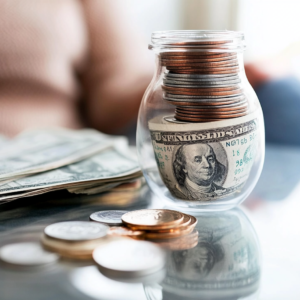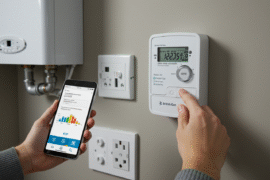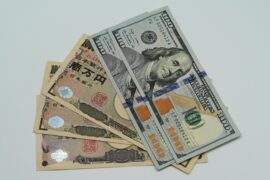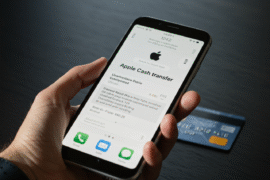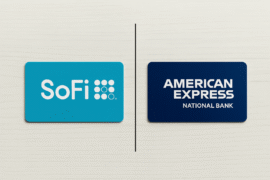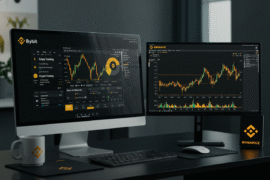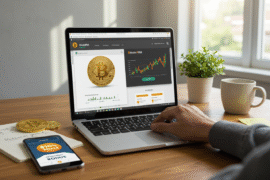This article may contain references to products or services from one or more of our advertisers or partners. We may receive compensation when you click on links to those products or services. Nonetheless, our opinions are our own.
The information presented in this article is accurate to the best of our knowledge at the time of publication. However, information is subject to change, and no guarantees are made about the continued accuracy or completeness of this content after its publication date.
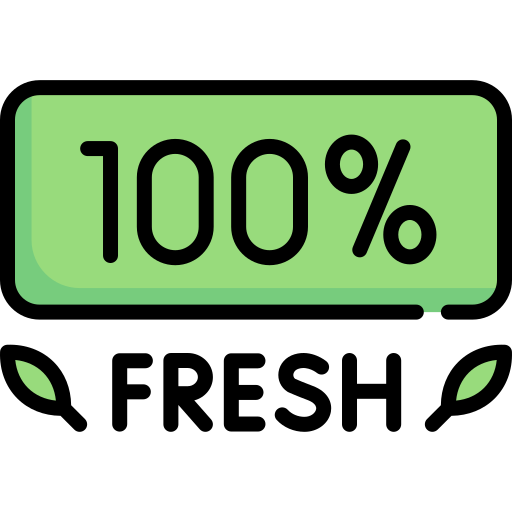
Updated by Albert Fang
As we deep dive into high-yield savings accounts for February 2025, it’s essential to identify the top players in the market that offer competitive interest rates and benefits. These accounts are crucial tools for individuals who maximize their savings while maintaining accessibility and security. Let’s explore some of the best options available this month. In the ever-evolving realm of personal finance, high-yield savings accounts are pivotal in helping individuals grow their wealth efficiently. As we step into February 2025, staying abreast of the best high-yield savings accounts that can potentially offer substantial returns is paramount. Let’s navigate through the top contenders that stand out in terms of interest rates, perks, and overall value for savers.
- Finding the Right High-Yield Savings Account
- The Benefits of High-Yield Savings Accounts
- How to Choose the Best High-Yield Savings Account
- Comparing High-Yield Savings Accounts
- Common Mistakes to Avoid When Opening a High-Yield Savings Account
- Strategies to Maximize Your Savings Growth
- Historical Trends in Savings Account Interest Rates
-
Frequently Asked Questions
- What is the difference between a traditional savings account and a high-yield savings account?
- Are online banks safe for high-yield savings accounts?
- Can I withdraw money anytime from a high-yield savings account?
- What happens if interest rates drop after I open my account?
- How can I ensure I get the highest possible APY?
- Is there a limit to how much I can deposit into a high-yield savings account?
- Are there alternatives to high-yield savings accounts?
- What are the tax implications of earning interest in a high-yield savings account?
- Do you pay taxes on high-yield savings accounts?
- How often do interest rates change for high-yield savings accounts?
- Can I lose money in a high-yield savings account?
- Recommended Reads
Finding the Right High-Yield Savings Account
In today’s fast-paced financial landscape, finding the right savings account can feel overwhelming. You’re likely looking for a way to make your hard-earned money work harder for you, and high-yield savings accounts are an excellent solution. As you embark on your savings journey this February 2025, it’s essential to consider options that offer competitive interest rates, low fees, and user-friendly features.
A high-yield savings account offers a significantly higher interest rate than a traditional savings account. With inflation and market conditions constantly changing, staying ahead is essential by placing your savings in an account that provides the best return. Choosing the right account ensures that your money works for you even when you’re not actively investing it.
Unlike traditional savings accounts, which may offer minimal interest, high-yield savings accounts take advantage of higher rates set by online and alternative financial institutions. These accounts provide a way to grow savings without the risks associated with investments, making them an excellent choice for individuals focused on financial security.
In the realm of high-yield savings accounts, it’s crucial to align your financial goals with the offerings of various institutions. As we delve deeper into 2025, the landscape continues to evolve, presenting savers with both opportunities and challenges. By exploring accounts that strike a balance between attractive interest rates, minimal fees, and convenient features, you pave the way for your wealth to flourish efficiently.In a world where every dollar’s potential matters, opting for a high-yield savings account signifies a deliberate choice towards optimizing your financial resources.
We’ll guide you through the best high-yield savings accounts currently available, ensuring you have all the facts to make informed decisions. Whether you aim to build an emergency fund, save for a vacation, or achieve a specific financial goal, these accounts will help you maximize your returns while keeping your money accessible. Let’s explore options to help you achieve your financial aspirations this month!
The Benefits of High-Yield Savings Accounts
Before diving into specific account options, it’s important to understand why a high-yield savings account might be the right fit for your financial strategy. High-yield savings accounts have emerged as a popular choice for individuals seeking to maximize their savings potential in today’s dynamic financial landscape. Offering substantially higher interest rates compared to traditional savings accounts, these accounts provide a secure avenue for growing your money without the volatility associated with investments.In an era marked by fluctuating inflation rates and market uncertainties, the stability and competitive returns offered by high-yield savings accounts make them an attractive option for those prioritizing financial security. Here are some of the key benefits:
- Higher Interest Rates: High-yield savings accounts offer significantly better returns on your deposited funds than traditional savings accounts.
- Liquidity and Accessibility: Unlike certificates of deposit (CDs), high-yield savings accounts allow easy access to your money while still offering competitive returns.
- Low Risk: Since these accounts are FDIC-insured, your deposits are protected against bank failures up to $250,000 per depositor, per institution.
- Financial Flexibility: You can use a high-yield savings account for a variety of financial goals, including emergency savings, travel funds, or major purchases.
How to Choose the Best High-Yield Savings Account
When selecting a high-yield savings account, consider the following factors:
- Interest Rates: Look for the highest APY available that is sustainable over time.
- Fees: Avoid accounts with monthly maintenance fees or excessive withdrawal penalties.
- Minimum Balance Requirements: Ensure the account fits your savings goals and that you meet the minimum deposit.
- Ease of Access: Mobile banking, ATM access, and online transfers should be seamless and convenient.
- Reputation of the Bank: Choose a well-rated financial institution with strong customer service and support.
What factors should you consider?
When considering the best high-yield savings account for your financial needs in 2025, several factors should be taken into account. First and foremost, look for accounts offering competitive interest rates that are sustainable over time to maximize your returns.Additionally, pay attention to any fees associated with the account, such as monthly maintenance fees or withdrawal penalties. Opt for accounts with minimal fees to ensure unnecessary charges don’t erode your savings. Consider your own financial situation and goals when assessing minimum balance requirements. Choose an account that aligns with your saving habits and ensures you can easily meet the deposit criteria.
How does APY impact your savings?
The Annual Percentage Yield (APY) plays a crucial role in determining the growth of your savings in a high-yield savings account. A higher APY means your money will earn more interest over time, leading to greater returns on your savings. By choosing an account with a competitive APY and keeping your funds in it long-term, you can significantly boost your earnings and achieve your financial goals faster. Always keep an eye on changes in APY rates to make informed decisions about where to grow your savings most effectively.
Are there any fees to watch out for?
When selecting the best high-yield savings account, you must keep an eye out for any potential fees that could impact your savings growth. Look for accounts with no monthly maintenance fees, low minimum balance requirements, and minimal withdrawal penalties. Anticipating and avoiding these fees will help maximize the returns on your savings over time, ensuring that your hard-earned money is working for you without unnecessary deductions. By choosing a reputable financial institution with transparent fee structures and excellent customer support, you can enjoy seamless and convenient transfers while growing your savings effectively in 2025.
Voted "Best Overall Budgeting App" by Forbes and WSJ
Monarch Money helps you budget, track spending, set goals, and plan your financial future—all in one app.
Get 50% OFF your first year with code MONARCHVIP
Comparing High-Yield Savings Accounts
When comparing high-yield savings accounts for 2025, it’s crucial to analyze key factors such as interest rates, fees, minimum balance requirements, ease of access, and the reputation of the bank. By prioritizing sustainable APYs, avoiding unnecessary fees, meeting deposit thresholds, and ensuring convenient access to your funds, you can make a well-informed decision tailored to your financial goals. Remember that choosing a reputable financial institution with reliable customer service is essential for a secure and efficient banking experience. As the year 2025 approaches, the landscape of high-yield savings accounts continues to evolve, offering consumers a range of options to secure their financial futures. With FDIC insurance safeguarding deposits up to $250,000 per depositor per institution, peace of mind is a key feature of these accounts.Moreover, the versatility of high-yield savings accounts allows individuals to earmark funds for various purposes, from rainy day reserves to aspirational goals like travel or big-ticket purchases.
Common Mistakes to Avoid When Opening a High-Yield Savings Account
One common mistake to avoid when opening a high-yield savings account is overlooking the fine print. Often, attractive APYs come with minimum deposit requirements or monthly fees can eat into your earnings. It’s crucial to carefully read the terms and conditions to understand all associated costs and benefits before deciding. Another pitfall to steer clear of is not considering your savings goals. Different high-yield savings accounts cater to varying needs, whether it’s building an emergency fund or saving for a specific goal like a vacation or down payment.
- Overlooking Fees: Some accounts may have hidden charges that can eat into your savings.
- Not Checking Withdrawal Limits: Federal regulations limit certain withdrawals per month.
- Ignoring Rate Fluctuations: Rates can change, so regularly reviewing your account’s APY is crucial.
- Failing to Automate Savings: Setting up automatic deposits can help you consistently grow your savings.
- Choosing an Account Without FDIC Insurance: Always verify that your funds are protected.
Strategies to Maximize Your Savings Growth
Strategies to maximize your savings growth include setting up automatic transfers from your checking account to your high-yield savings account, taking advantage of bonus interest rates for meeting specific criteria, and regularly reviewing and adjusting your savings goals to ensure they align with your financial objectives. Furthermore, consider exploring certificates of deposit (CDs) or money market accounts as complementary options to diversify and optimize your savings portfolio. By implementing a combination of these strategies tailored to your individual financial situation and goals, you can effectively accelerate the growth of your savings while safeguarding against common pitfalls in high-yield savings account management. Beyond simply opening a high-yield savings account, consider additional strategies to accelerate your savings growth:
- Automate Your Savings: Set up automatic transfers to contribute to your account consistently.
- Reinvest Interest Earnings: Let your interest earnings accumulate rather than withdrawing them.
- Review Your Savings Plan Quarterly: Regularly assess your account’s performance and compare with newer offers.
- Consider Multiple Accounts: Some individuals open multiple accounts to separate emergency funds, vacation funds, and investment reserves.
Implementing these strategies can help you make the most of your high-yield savings account and reach your financial goals faster.
5 Smart Ways to Use a High-Yield Savings Account
1. Emergency Fund: Use your high-yield savings account to build and maintain an emergency fund for unexpected expenses or financial setbacks. The higher interest rate will help your savings grow faster while keeping it easily accessible when needed.
2. Short-Term Goals: Save for short-term goals such as a vacation, home renovation, or major purchase in a high-yield savings account. You can take advantage of better returns than a traditional savings account without risking your principal.
3. Down Payment Fund: Consider using a high-yield savings account to save for a down payment on a house or other large purchase. The competitive interest rates can help you reach your goal more quickly.
4. College Savings: Save for your child’s education expenses by utilizing a high-yield savings account. The growth potential can assist in offsetting rising tuition costs over time.
5. Investment Reserves: Store funds earmarked for investments in a high-yield savings account. This provides a safe and liquid option while earning higher interest than traditional accounts.
Historical Trends in Savings Account Interest Rates
In recent years, high-yield savings accounts have become popular among savers looking to earn more on their money. These accounts offer competitive interest rates compared to traditional savings accounts, making them attractive options for those seeking higher returns.However, as with any financial product, it’s essential to consider the tax implications of earning interest in a high-yield savings account. Interest earned is typically regarded as taxable income and must be reported on your tax return. The bank will provide you with a 1099-INT form detailing the interest earned for the year.
Frequently Asked Questions
What is the difference between a traditional savings account and a high-yield savings account?
A traditional savings account typically offers a much lower interest rate than a high-yield one. High-yield accounts provide a significantly higher return on savings, making them ideal for those looking to maximize their money without major investment risks.
Are online banks safe for high-yield savings accounts?
Yes, online banks are just as safe as traditional banks as long as they are FDIC-insured. Always ensure that your chosen institution offers this protection before opening an account.
Can I withdraw money anytime from a high-yield savings account?
Due to federal regulations, most high-yield savings accounts have withdrawal limits, typically allowing up to six withdrawals per month before fees are applied.
What happens if interest rates drop after I open my account?
Interest rates on high-yield savings accounts can fluctuate depending on economic conditions. If rates drop, it may be beneficial to monitor alternative accounts and consider transferring to one with a better rate.
How can I ensure I get the highest possible APY?
To maximize your earnings, regularly compare savings account rates from different institutions. Some banks offer promotional rates for new customers, which may provide higher returns in the short term.
Is there a limit to how much I can deposit into a high-yield savings account?
Most banks do not impose deposit limits, but FDIC insurance only covers up to $250,000 per depositor, per institution. Consider spreading funds across multiple insured accounts if your savings exceed this amount.
Are there alternatives to high-yield savings accounts?
Yes, alternatives include money market accounts, certificates of deposit (CDs), and investment accounts. Each option has different risks and benefits, so choose based on your financial goals and liquidity needs.
What are the tax implications of earning interest in a high-yield savings account?
Interest earned on a high-yield savings account is considered taxable income. The bank typically provides a 1099-INT form for reporting interest earnings on your tax return.
Do you pay taxes on high-yield savings accounts?
Yes, interest earned on high-yield savings accounts is typically considered taxable income and must be reported on your tax return. It’s important to keep track of the interest earned throughout the year and report it accurately to comply with tax regulations. The bank will provide you with a 1099-INT form detailing the amount of interest earned for the year, which you will use when filing your taxes. Be sure to consult with a tax professional for personalized guidance on managing taxes related to high-yield savings accounts.
How often do interest rates change for high-yield savings accounts?
Interest rates for high-yield savings accounts can vary depending on market conditions and the financial institution’s policies. In general, these rates are not fixed and can change over time in response to factors such as economic trends, inflation rates, and decisions made by the Federal Reserve. It’s advisable to monitor interest rate movements regularly if you are looking to maximize your returns from a high-yield savings account.
Can I lose money in a high-yield savings account?
While high-yield savings accounts generally offer higher returns than traditional ones, they are not entirely risk-free. One potential risk to consider is inflation, which can erode the purchasing power of your money over time if the interest earned does not keep pace. Additionally, fluctuations in interest rates and economic conditions can impact the overall returns on your high-yield savings account. It’s essential to weigh these factors and consider diversifying your investment portfolio to mitigate potential risks associated with high-yield savings accounts.

Reviewed and edited by Albert Fang.
See a typo or want to suggest an edit/revision to the content? Use the contact us form to provide feedback.
At FangWallet, we value editorial integrity and open collaboration in curating quality content for readers to enjoy. Much appreciated for the assist.
Did you like our article and find it insightful? We encourage sharing the article link with family and friends to benefit as well - better yet, sharing on social media. Thank you for the support! 🍉
Article Title: Best High-Yield Savings Accounts 2025: Top Picks for Your Money
https://fangwallet.com/2025/02/19/best-high-yield-savings-accounts-2025/The FangWallet Promise
FangWallet is an editorially independent resource - founded on breaking down challenging financial concepts for anyone to understand since 2014. While we adhere to editorial integrity, note that this post may contain references to products from our partners.
The FangWallet promise is always to have your best interest in mind and be transparent and honest about the financial picture.
Become an Insider

Subscribe to get a free daily budget planner printable to help get your money on track!
Make passive money the right way. No spam.
Editorial Disclaimer: The editorial content on this page is not provided by any of the companies mentioned. The opinions expressed here are the author's alone.
The content of this website is for informational purposes only and does not represent investment advice, or an offer or solicitation to buy or sell any security, investment, or product. Investors are encouraged to do their own due diligence, and, if necessary, consult professional advising before making any investment decisions. Investing involves a high degree of risk, and financial losses may occur including the potential loss of principal.
Source Citation References:
+ Inspo
There are no additional citations or references to note for this article at this time.

